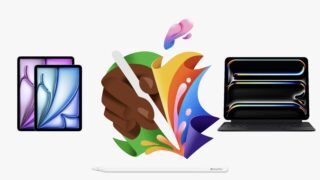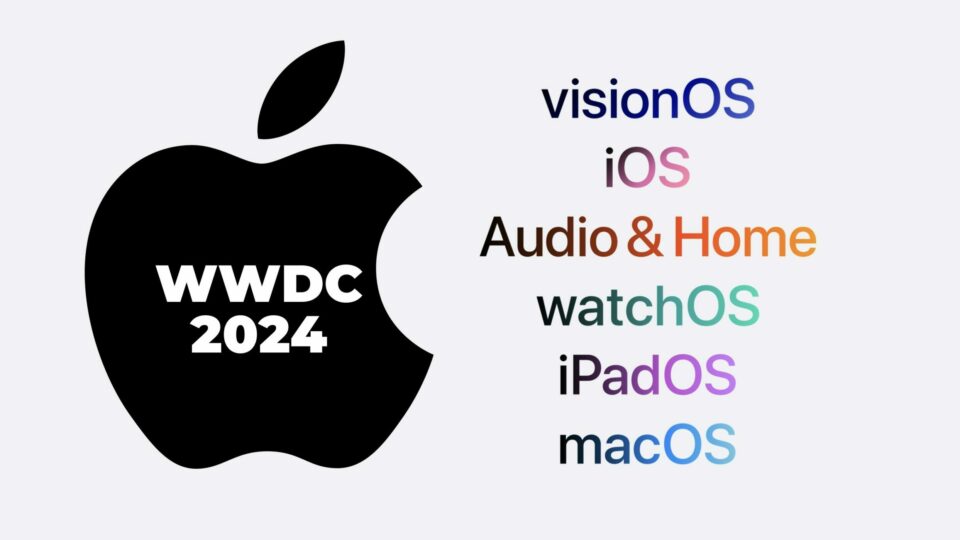
Apple’s WWDC June 2024 Keynote
by Jeff MacArthur on June 10, 2024
Apple had a lot of software-related announcements at its (too-long) June 2024 WWDC keynote and we’ll touch on some of the bigger ones below.
Apple Intelligence
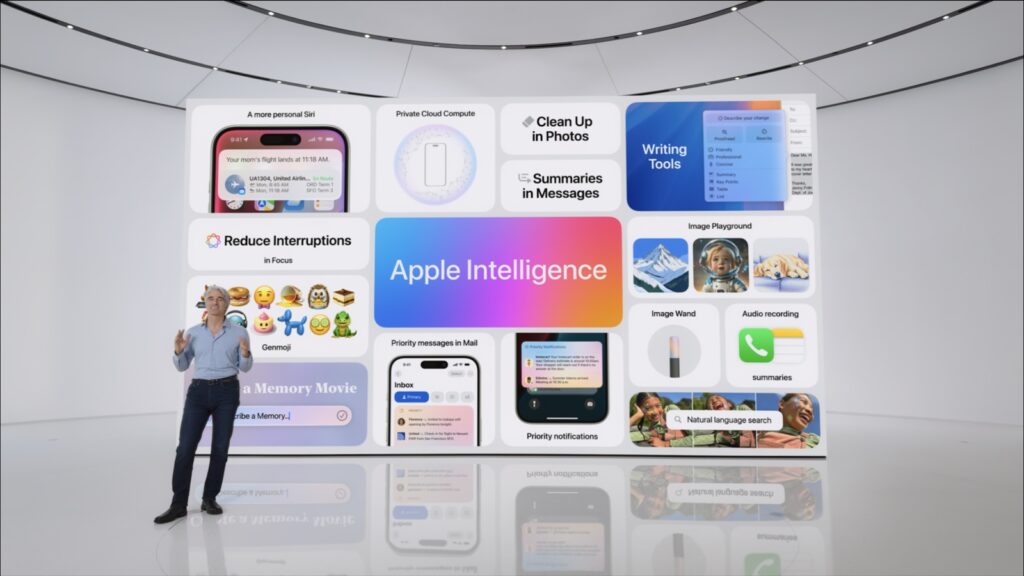
This was kinda/sorta positioned as the “one more thing” moment but basically it’s Apple’s secure version of AI built into your iPhone, iPad, and Mac that leverages “your personal context to give you intelligence that’s most helpful and relevant for you”. There are some neat writing tools (e.g. summarizing text), a ton of image-related features (e.g. AI-crafted “Genmoji” that you can create to use on your devices; a new Image Playground app that lets you generate custom images; etc.), and the always-promised improvements to Siri (we’ll see, I guess). The big news (that has been leaking through the rumor mill for a while now) is that Apple has made a deal to integrate ChatGPT into Siri and Writing Tools (free for the user, it would appear). The proof is in the pudding with this stuff, so we’ll need to see how well it works when it comes out this fall.

Cross-OS Apps: Messages, Photos, Mail, and More
I’m going to deal with this separately from the OS sections below since these apps cross all or most of them. Messages is expanding on your methods of expression with several new features including Tapback using any emoji or sticker (instead of just the standard Love, Thumbs Up/Down, Haha, !!, and ??); typing with bold, italics, underline, and strikethrough; animated text effects; and the ability to schedule a message to Send Later (which is a great idea). Messages also will support RCS messaging so your non-iMessage friends don’t feel so unhip.
Photos has its “biggest redesign ever” with better sorting tools, additional tools, and the concept of Collections (photos grouped by topics like Recent Days, Trips, Peoples & Pets). Mail is embracing a similar idea (i.e. Categories vaguely like Gmail did ages ago, including Primary, Transactions, Updates, and Promotions), while also providing a new Digest view to collect emails that are from a specific business together for easier scanning. Notes is adding live audio transcription, collapsible sections within a note, highlighting styles, as well as a neat feature called Math Notes that does calculations, draws graphics, and solves expressions inline. Finally, there’s a new dedicated Passwords app that works across Mac, iPhone, iPad, Vision Pro, and even Windows.
macOS
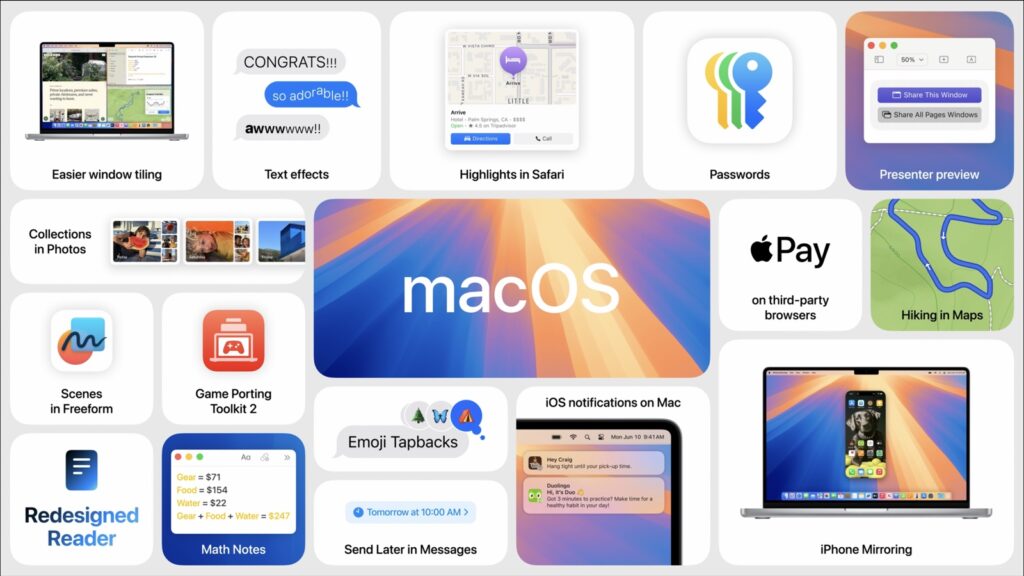
One of the more interesting announcements was the new macOS Sequoia Continuity feature that allows you to mirror (over wifi, so doesn’t have to be physically tethered) your iPhone on your Mac and operate it virtually through your Mac’s screen/controls (all the way up to having iPhone notifications appear on your Mac that when clicked open your “virtual” iPhone – and with drag and drop even arriving later this year). Apple will also allow your Mac to insert background replacements for FaceTime and Zoom video calls, as well as a new Presenter Preview that let’s you see a preview of what you’re going to show your co-callers before you share it. Automatic window tiling and Safari improvements (including a new Highlights feature that lets you interact with specific info on the page through the most relevant app, e.g. Maps) round out the other features that caught my eye.
iOS & iPadOS

We’re getting even more customizations in iOS, including Home Screen layouts and dark mode icons. Control Centre also gets multiple screens (swipe up/down to see), including Media and Home control areas, and a gallery of additional controls to choose from (including from third-party apps). There’s also an ability to lock – which requires Face ID to open an app – or Hide – which squirrels the app away into a special needs-Face-ID-to-open app folder – apps in case someone else might be using your device. A new Wallet feature called Tap to Cash allows you to transfer money between two iPhones without sharing any other information, which seems very convenient (and potentially risky?), and there’s a new Event Tickets interface that includes an event guide for venue and other info. Finally, the Home app will let you grant specific controls with guest access, which seems very handy, as well as allowing you the ability to hands-free unlock doors simply by having your iPhone in your pocket (or Apple Watch on your wrist) with a new Express Mode feature.
Frankly – and maybe because Apple just had an iPad event in May 2024, there’s nothing much on the iPad front (well, except it finally got a native Calculator app) that isn’t covered in iOS or the apps section, so I’ll just leave it at that.
visionOS

With visionOS being the youngest (and smallest, user-wise) of Apple’s platforms, it’s not too surprising that there wasn’t much on offer with visionOS 2. In an effort to ensure that they have more content that plays on the Vision Pro, Apple announced that you’ll now be able to create spatial photos from 2D images, as well as SharePlay your Photos on the Vision Pro. There are also a couple of new gestures that map to things including opening the Control Center, plus a Mac Virtual Display, which displays a virtual wraparound screen the size of two 4K displays beside one another when you’ve got your Mac in front of you IRL. Apple also noted that sales of the Vision Pro will be expanded to new jurisdictions, including Canada, Australia, France, Germany, and the UK on July 12.
watchOS

watchOS was similarly a little scant on exciting new features (beyond some customization aspects), but they did announce a new Vitals app that tracks (and trends) your health metrics, plus a more athlete-focused Training Load app to measure (and trend) the intensity of your workouts. You can also now have live activities in Smart Stacks and the recent double-tap (with your fingertips, a la Vision Pro) feature is being opened to third-party developers.
tvOS, er, I mean, “Audio & Home”
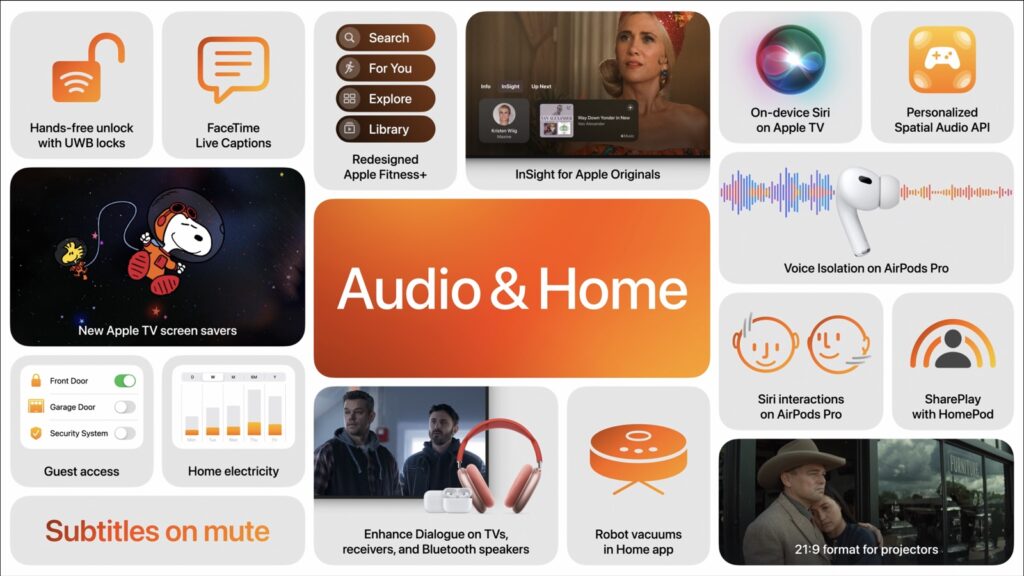
The blackest of the black sheep of Apple OSes, tvOS, gets not much attention at all, as usual (to the point where it doesn’t even have its own graphic). There’s a new InSight feature you can use in the Apple TV app (on Apple TV and iPhone, it seems) that lets you learn more about the actors and music currently onscreen, and also Enhance Dialog feature improvements. I covered some of the Home features above in the iOS section above as well.
A finally very cool feature that was announced as part of the Audio & Home part of the presentation was hands-free Siri Interactions for AirPods Pro (2nd gen), which allow you to nod your head “yes” or shake it “no” to respond to Siri requests in your headphones (great if you’re in a crowded space or somewhere you don’t want to speak out loud). Also new for AirPods Pro is voice isolation (i.e. removing background noises) and personalized Spatial Audio for gaming.
There were many other small announcements but nothing very earth-shattering at this event, but you can find out even more about it all at Apple.com. What was your favorite thing announced? Let us know on Amber’s socials!

